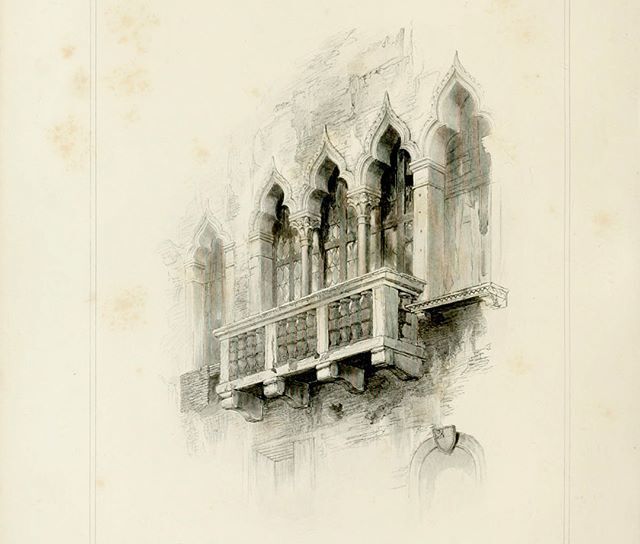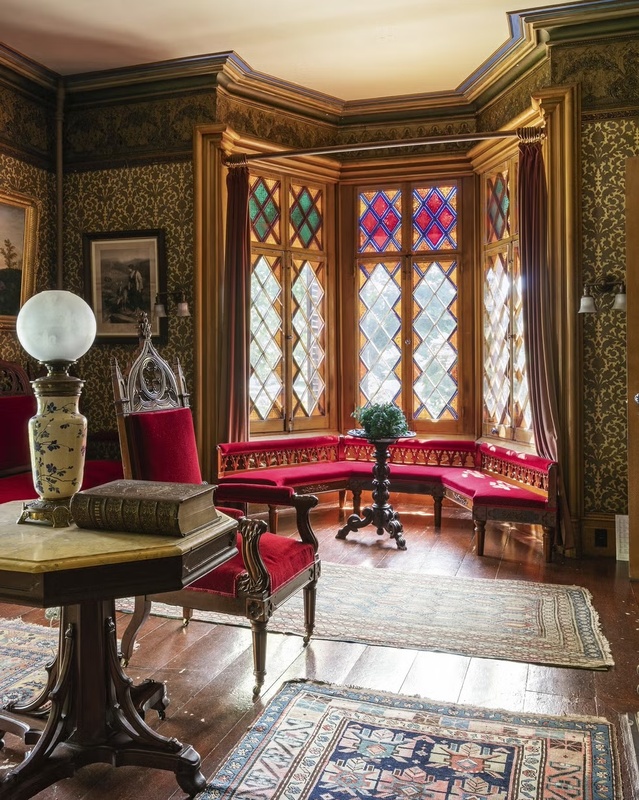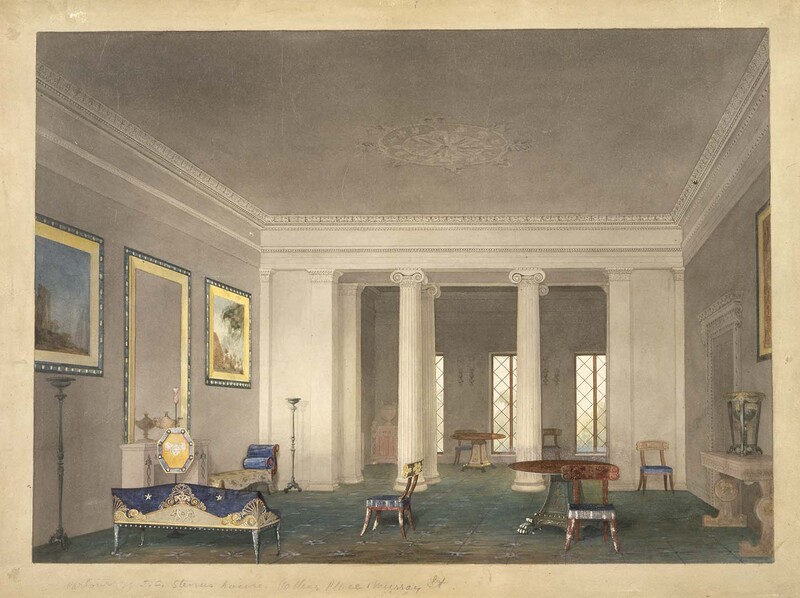The Gothic Library, History
Step into this candlelit library with its vaulted ceiling, and you might catch the shadowed whispers of a medieval European society echoing throughout the chamber. These choices were by no mere accident, for Mrs. Fisher is highlighting the time in our young country's history where we reached back---to the mystical, and stately Middle Ages---for inspirations. The movement became the Gothic Revival, a style that reshaped architecture and interiors with pointed arches, intricate tracery, and a feel of the dramatic.
Gothic Revival emerged in the United States during the early to mid-19th century with figures such as John Ruskin. His picturesque writings inspired the aesthetic beauties of Gothic architecture, such as The Seven Lamps of Architecture (1849) and The Stones of Venice (1851). His work proposed that the individuality of the Gothic Revival spoke to a connection between architect and architecture that, to Ruskin, had been lacking from industrialization's mass-production.
"‘For the very first requirement of Gothic architecture being that it shall admit the aid, and appeal to the admiration, of the rudest as well as the most refined minds, the richness of the work is . . . a part of its humility ... the very life of the Gothic school, is shown not only in the imperfection, but in the accumulation, of ornament. The inferior rank of the workman is often shown as much in the richness, as the roughness, of his work; and if the co-operation of every hand,
and the sympathy of every heart, are to be received, we must be content to allow the redundance which disguises the failure of the feeble, and wins the regard of the inattentive."
-The Stones of Venice, Ruskin (1851)
Interiors of the Gothic Revival often featured dark woods, stained glass, ornate wallpapers, and furniture pieces which were engraved with ecclesiastical detailing. These choices were a drastic shift from the clean lines of the Greek Revivals and neoclassical styles predating this shift.
Below is a comparison of the two styles, the First in the Gothic Revival and the Second in the earlier Neoclassical style:
Many believed that it wasn't just an aesthetic shift in design but one of values as well, with the Gothic interior viewed as an antidote to the cold mechanization of the industrial age by reintroducing ornamentation and individualism.
The style would soften as the century progressed, merging with the boon of the Queen Anne and other victorian era remergences. Yet, distinct charms live on today in our homes with embellished carved wood panels and cathedral-style windows.

![<a href="/omeka/items/browse?advanced%5B0%5D%5Belement_id%5D=50&advanced%5B0%5D%5Btype%5D=is+exactly&advanced%5B0%5D%5Bterms%5D=A+Photograph+of+John+Ruskin%2C+%281819-1900%29%2C+by+Unknown%2C+%5Bca.+mid-late+ninteenth+century%5D">A Photograph of John Ruskin, (1819-1900), by Unknown, [ca. mid-late ninteenth century]</a> <a href="/omeka/items/browse?advanced%5B0%5D%5Belement_id%5D=50&advanced%5B0%5D%5Btype%5D=is+exactly&advanced%5B0%5D%5Bterms%5D=A+Photograph+of+John+Ruskin%2C+%281819-1900%29%2C+by+Unknown%2C+%5Bca.+mid-late+ninteenth+century%5D">A Photograph of John Ruskin, (1819-1900), by Unknown, [ca. mid-late ninteenth century]</a>](https://omeka.wilkes.edu/omeka/files/fullsize/abb88b0fc9a7d3c9f732159c4cf3a7b7.jpg)


